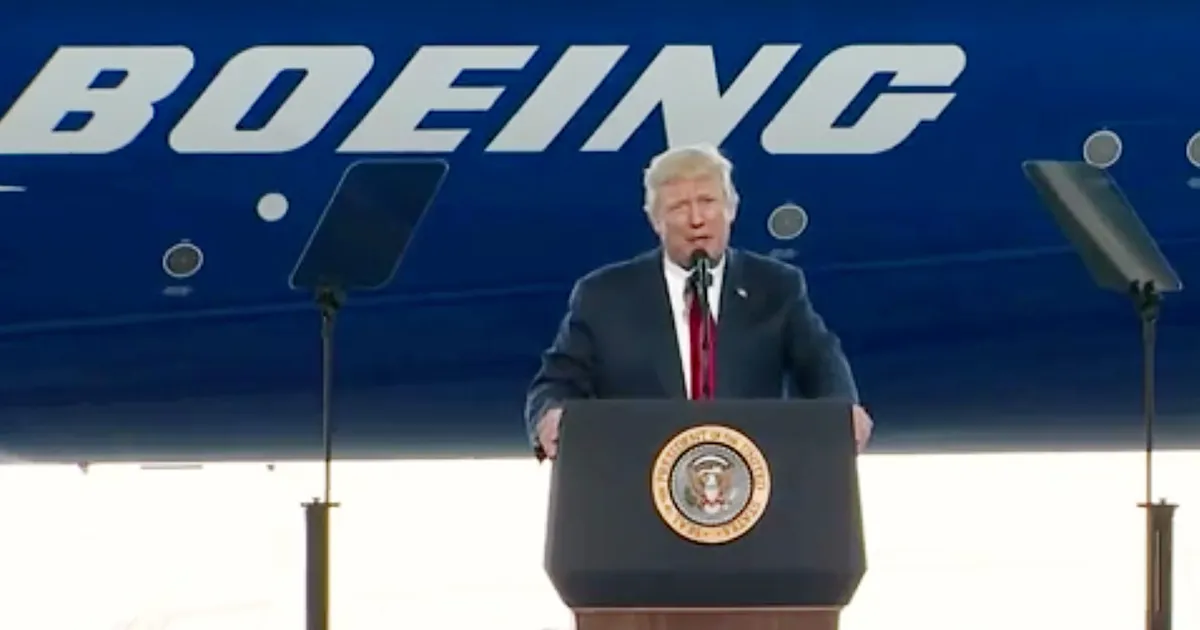Boeing Jet Returns to U.S. from China Amid Trump-Era Tariff Fallout – Key Details
Latest Update:
A Boeing aircraft originally destined for a Chinese airline has been forced to return to the U.S. due to financial complications linked to Trump-era tariffs, marking another ripple effect from the prolonged U.S.-China trade war.
Why This Happened
1. Trump’s Tariff War Impact
- 25% tariffs imposed on Chinese imports (2018-2020) triggered retaliatory measures from Beijing.
- China slowed Boeing orders while favoring Airbus (European rival).
- This specific jet’s delivery was blocked or delayed due to financial disputes tied to trade policies.
2. Boeing’s Struggles in China
- Pre-tariffs: China was Boeing’s largest overseas market.
- Post-tariffs: Orders plunged, with Chinese airlines canceling or deferring purchases.
- Geopolitical tensions (tech wars, spy balloon incident) worsened the situation.
3. The Fate of the Returned Jet
- Likely to be resold to another airline (possibly in India or Southeast Asia).
- May undergo refurbishment before re-entering the market.
- Reflects ongoing trade uncertainty for U.S. aerospace exports.
Broader Implications
✅ Short-Term:
- Boeing loses revenue from Chinese carriers.
- Airbus gains more market share in China.
⚠️ Long-Term:
- U.S.-China trade relations remain fragile under Biden.
- Boeing may diversify markets to reduce reliance on China.
Key Quotes & Sources
- “The tariffs disrupted a decades-long aerospace trade flow.” – Aviation analyst
- “Boeing’s China woes are a mix of politics and economics.” – Trade expert
External Links:
- Boeing’s China Market Challenges (Reuters)
- U.S.-China Tariff War Timeline (Bloomberg)
- Aviation Industry Trade Data (IATA)
What’s Next?
- Watch for Biden administration’s China trade policy shifts.
- Monitor Boeing’s 2024 orders for signs of recovery.
- Check if China’s COMAC (domestic jet maker) benefits further.

A Boeing 737 MAX jet, originally intended for China’s Xiamen Airlines, has returned to the United States amid escalating trade tensions between the U.S. and China. The aircraft, painted in Xiamen’s livery, was stationed at Boeing’s Zhoushan completion center awaiting final delivery. However, the imposition of steep tariffs—145% by the U.S. on Chinese imports and 125% by China on U.S. goods—rendered the delivery financially unfeasible, prompting the jet’s return to Boeing’s Seattle facility. The Express Tribune+6Reuters+6Yahoo Finance+6
The Chinese government has reportedly instructed its airlines to halt further deliveries of Boeing jets and to cease purchasing U.S.-made aircraft parts. This move disrupts the longstanding duty-free status of the aerospace industry and poses significant challenges for Boeing, which has a backlog of approximately 130 unfulfilled orders from Chinese carriers. Latest news & breaking headlines+8Financial Express+8CBS News+8Reuters+3Benzinga+3Reuters+3
The current trade dispute threatens Boeing’s position in one of its most critical markets. China, projected to account for 20% of global large jet demand over the next two decades, is a key player in the aviation industry. The ongoing tariff war not only impacts Boeing’s immediate deliveries but also raises concerns about its long-term competitiveness in the Chinese market. Axios+1Axios+1Axios
-
Boeing 737 MAX,
